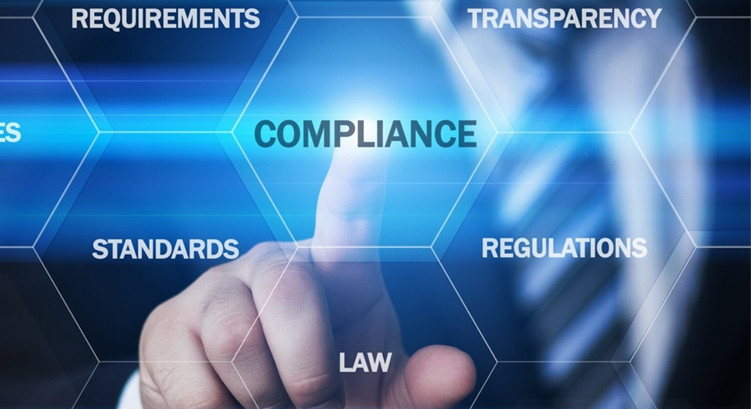Key Takeaways
- The importance of robust compliance risk management in mitigating potential regulatory pitfalls.
- Common challenges faced by organizations in maintaining compliance.
- Best practices to implement effective compliance risk management strategies.
- Case studies and examples of successful compliance risk mitigation.
The Importance of Compliance Risk Management
Compliance risk management is a cornerstone of any successful organization. It includes recognizing, evaluating, and reducing risks linked with failure to comply with laws, regulations, and internal guidelines. Effective compliance risk management helps organizations avoid legal penalties, financial losses, and reputational damage.
To learn more about effective compliance strategies, it’s essential to understand the core components that ensure a robust framework. With proper compliance measures, businesses can avoid significant setbacks. Regulatory bodies continuously evolve; companies must adapt to stay informed and compliant.
Compliance frameworks protect organizations from regulatory penalties, enhance operational efficiency, and build stakeholder trust. Effective risk management often necessitates a proactive approach, whereby businesses anticipate and mitigate potential compliance issues before they become problematic.
Moreover, strong compliance frameworks can give companies a competitive advantage. Companies that maintain rigorous compliance standards often demonstrate their commitment to ethical business practices, attracting investors, customers, and partners. Hence, integrating compliance risk management into an organization’s core strategy is not just about adhering to rules—it’s about fostering a culture of integrity.
Common Challenges in Compliance Risk Management
- Complex Regulatory Environment: Staying compliant and up-to-date is difficult for organizations due to the constantly changing regulatory environment. Different industries have varying rules, which can change frequently due to new legislation or amendments to existing laws. Keeping track of all these changes and understanding their implications requires ongoing effort and expertise.
- Resource Constraints: A lack of financial and human resources can impede the successful execution of compliance programs. Small to midsize companies often need help to allocate sufficient budgets for compliance initiatives. Additionally, the need for more skilled personnel capable of managing compliance risks adds another layer of difficulty.
- Integration with Business Operations: Ensuring compliance measures are seamlessly integrated into day-to-day business activities is often complex. Operational staff may view compliance as an additional burden rather than a core component of their job. It can lead to resistance or lack of buy-in, affecting compliance efforts’ efficacy.
- Data Management: Overseeing and protecting extensive data to adhere to data protection laws poses a significant hurdle. Because of the growing digitalization trend, companies are gathering more substantial data than in the past. Ensuring this data is stored, processed, and transmitted while complying with data protection laws like GDPR and CCPA is complex.
Although these challenges may appear intimidating, comprehending them can help you form successful strategies to conquer them. Awareness of the obstacles allows organizations to tailor their compliance risk management approaches to address specific issues and mitigate associated risks.
Best Practices for Effective Compliance Risk Management
Organizations can adopt several best practices to manage compliance risks effectively:
- Regular Training and Awareness: Conduct regular training sessions to inform employees about compliance requirements and responsibilities. It raises awareness and empowers employees to act as the first line of defense against non-compliance. Frequent updates and refresher courses ensure that compliance knowledge is current and applicable.
- Implement Robust Internal Controls: Establish internal controls and monitoring mechanisms to detect and prevent non-compliance issues. Organizations can quickly identify and rectify compliance breaches by having a system of checks and balances before they escalate. Internal audits and real-time monitoring systems play crucial roles in maintaining compliance.
- Leverage Technology: Utilize technology solutions such as compliance management software to automate and streamline compliance processes. Advanced tools can help track regulatory changes, manage documentation, and provide real-time insights into compliance status. Automation reduces manual errors and frees up resources for more strategic tasks.
- Conduct Regular Audits: Conduct regular audits to find discrepancies and ensure compliance with regulations. Audits provide a systematic review of compliance programs, pinpointing weaknesses and areas for improvement. They also serve as a record of due diligence in the event of regulatory inspections.
- Seek Expert Advice: Engage with compliance experts or legal advisors to stay informed about regulatory changes and best practices. Experts can provide valuable insights and recommendations, helping organizations navigate complex compliance landscapes. Their expertise ensures that compliance strategies are both legally sound and practically feasible.
Implementing these best practices requires commitment and continuous effort, but the benefits outweigh the challenges. Organizations that prioritize compliance risk management safeguard themselves from regulatory risks and establish a culture of compliance that extends throughout all levels of the organization.
Case Studies of Successful Compliance Risk Mitigation
Several organizations have successfully implemented compliance risk management strategies. For instance, a study by McKinsey highlighted how a multinational corporation significantly reduced compliance risks by overhauling its compliance framework and integrating technology solutions.
By adopting a risk-based approach, the company was able to focus its resources on high-risk areas, improving overall compliance and reducing incidents of non-compliance. Another example includes a financial institution that enhanced compliance by conducting comprehensive risk assessments and leveraging third-party compliance tools.
Through these efforts, the institution was able to streamline its compliance processes, reduce the likelihood of regulatory fines, and foster a culture of ethical behavior. Their approach included regular employee training sessions, the use of advanced compliance software for monitoring and reporting, and collaboration with external legal advisors to ensure all regulatory changes were swiftly implemented.
These case studies emphasize the importance of tailored compliance risk management approaches considering an organization’s unique challenges and operational requirements.
By learning from these examples, other businesses can implement similar strategies to navigate their compliance landscapes effectively. The success stories underline that proactive and comprehensive compliance risk management is achievable and beneficial regardless of an organization’s size and industry.

